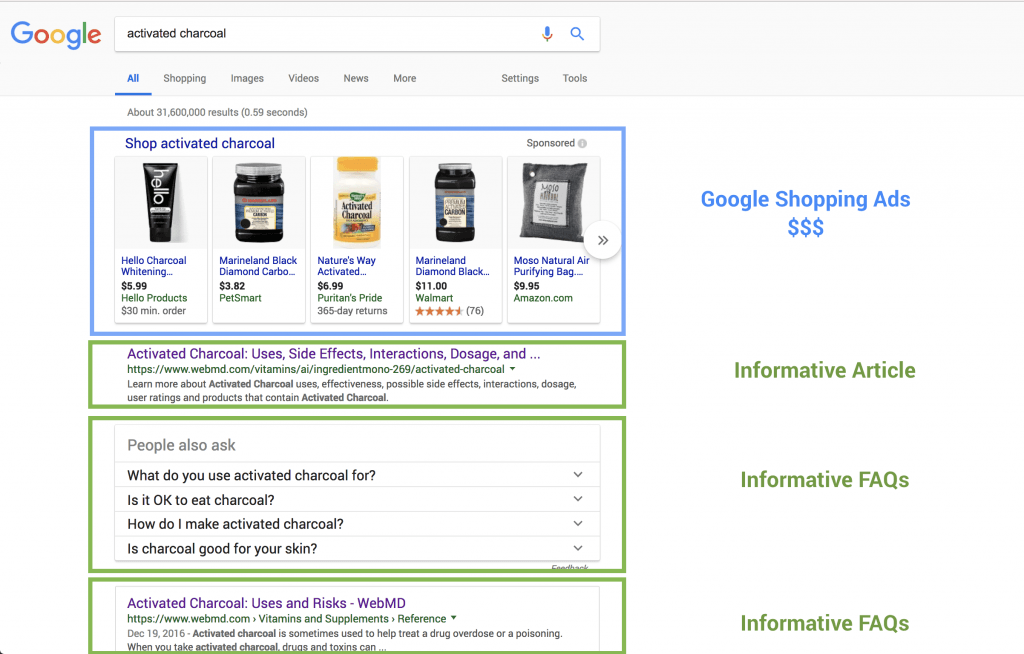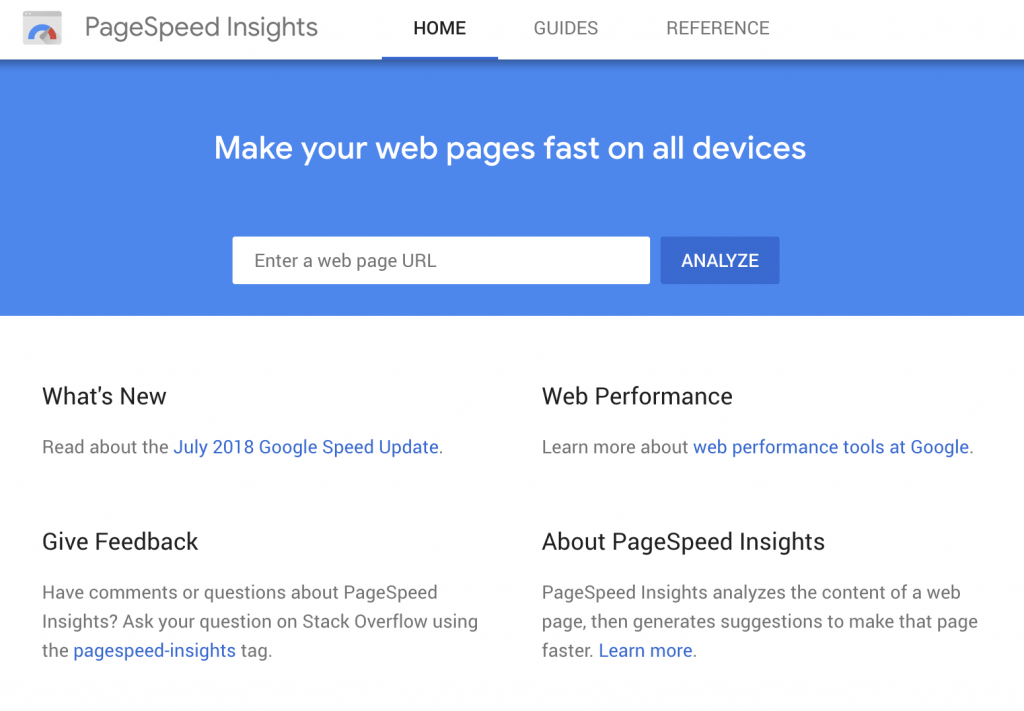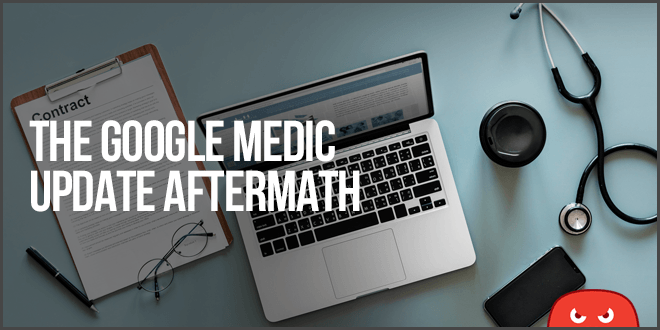Quick Links
Since Aug 1, 2018, Google has released a slew of updates that have kept the search results volatile.
Many have referred to the August 1st, 2018 update as the “Medic Update” because it largely affected health/medical sites.
However, the updates have spread outside to many different niches including e-commerce, fashion sites, local, affiliate, and more.
Google has said the original update wasn’t targeted specifically at Medical sites, but was a broad core update.
The general consensus is that this targeted what Google calls “Expertise, Authority, & Trust” (or E-A-T) in their Google Rater Guidelines, which is determined by a variety of signals (as we’ll discuss below).
As the “Medic” update rolls out, don’t forget that other factors may be at play as well, including rolling Penguin updates as we have seen evidence of link-based changes in the last few months.
If your site was hit, the unfortunate part of the updates is that the majority of the advice to fix it up until this point has been a bit bland without strong compelling evidence to back it up.
So in today’s article, we’re going to look at the latest data and break down what you need to do based on everything that’s out there.
We’re also opening this up to the community – If you have information, even anecdotal, please let us know in the comments. We will compile the information and publish it to help the community.
Medic / Late 2018 Core Update Timeline
Like we mentioned, there have been many updates and SERP fluctuations associated with this update after the initial rollout.
Here is a timeline of the various tweaks that have come out over the last few months:
- August 1 – First “Medic Update” Rollout
- Aug 17-18 – Tweak To Medic Update (source)
- Sep 8-11 – Local Update (source)
- Sept 17-19 Medic Updates (source)
- Sept 24 – Broad Core Updates (source)
- Sept 27 – Update (source)
- October Updates – Sistrix points out there is a tie between links and medic, especially for october updates (source)
- Oct 15 – Update (source)
- Oct 16 – Update (source, source)
- Oct 31 – Halloween Update (source)
We continue to see tweaks to this update and we expect to see more.
Actionable Steps For If You Were Hit
As with any update, it can be hard to determine the exact cause of the problem, but the good news is we’re seeing evidence of sites bouncing back.
Over the last 5+ years as Google has come out with updates, the industry panics about getting penalized.
But with almost any form of marketing, there is almost always a way to recover. Let’s talk about the strategies that you can implement and check on for this update:
Create New Content To Support Search Intent Changes
One of the things that we have noticed is that Google has changed the “search intent” for many queries. Google is trying to provide more information up front to help satisfy users.
For instance, if you searched for a supplement before, Google may have displayed product pages to buy the supplement.
After the update, Google is starting to display more information based pages that explain the supplement before displaying a product page/buy page.

(Well to be clear, Google shopping ads impressions have increased by 47 percent year over year – so if you want to be at the top, you can always pay for it! But if you want to rank, it’s probably a good idea to create informative content)
This is why it’s a good idea to really flesh out your pages, create blog posts and articles that explain your services, and likely points to why our HOTH Blogger service has skyrocketed in sales in the last year.
For any terms that you have lost or dropped for, check out what types of pages Google is now ranking. It may be that you need to create a different type of content vs trying to fix what you currently have.
Penguin – Disavow Unnatural Links
We’ve seen reports that disavowing unnatural / low quality links can help with recovery. Sistrix pointed out a connection between links & the medic updates.
Check & Improve Page Speed
Another big talk has been page speed. As Google is moving sites to mobile-first indexing, they are placing a larger emphasis on user experience.

Check your page speed with Google’s tool here.
Read Google Rater Guidelines
Much of the talk about this update is in reference to Google’s Quality Rater Guidelines.
The document is quite repetitive and long, so we went through it and pulled out the actionable advice below:
Create An About Page, Make sure it’s linked from every page of the site.
In the rater guidelines, Google is huge on being able to find who is responsible for the site and the content. One way to make that clear is to create an “About” page and make it easy to find.
From the rater guidelines:
Create an author bio on every post
Google also wants you to clearly state who is creating the content and what their credentials are.
From the rater guidelines:
Positive website reputation for a website that is responsible for the MC (main content) on the page. Positive reputation of the creator of the MC, if different from that of the website.
[A bad signal would be if]…there is an unsatisfying amount of website information or information about the creator of the MC for the purpose of the page (no good reason for anonymity).
If you’re on WordPress, you can use a plugin like Simple Author Box.
Create a Job / Careers Page (If applicable)
This is a sign of a real company and comes up in the rater guidelines.
From the rater guidelines:
Create A Contact Us / Customer Service Page
This is pretty obvious for any real business, but Google makes multiple points about it.
From the rater guidelines:
Look for a “contact us” or “customer service” link. Explore the website if you cannot find a “contact us” page.
“Contact Us” page, it does not give the name of a company or a physical address, which also cannot be found anywhere else on the website…
Get Reviews Off Your Website
Google is huge on reputation. We’ve seen evidence of this in the last few years of more and more schema stars being displayed in the SERPs and aggregate reviews being pulled into knowledge panels.
From the rater guidelines:
Use reputation research to find out what real users, as well as experts, think about a website. Look for reviews, references, recommendations by experts, news articles, and other credible information created/written by individuals about the website.
A mildly negative reputation for a website or creator of the MC, based on extensive reputation research…. For a YMYL website, a mixed reputation is a cause for a Low rating.
A great way to encourage real reviews is to set up a system for collecting reviews as we do with HOTH Stars.
With HOTH Stars, we help automate asking for reviews and getting reviews on third party sites that matter most to you.
Get Awards For Credibility
Google likes if you have awards or other signs of credibility.
From the rater guidelines:
Reputation research is necessary for all websites you encounter. Do not just assume websites you personally use have a good reputation. Please do research! You might be surprised at what you find.
Look for articles, reviews, forum posts, discussions, etc. written by people about the website.
Get Good Ratings on BBB
Google actually calls out the BBB multiple times in the document.
From the rater guidelines:
[In reference to a low-quality result]…This business has a BBB rating of F.
Check your BBB rating on the official Better Business Bureau site.
Improve Content
“Improve content” is pretty generic as advice so we will break down what are some ways to do that in the following bullets. Here are some examples from the raters doc where this is addressed:
High E-A-T medical advice should be written or produced by people or organizations with appropriate medical expertise or accreditation. High E-A-T medical advice or information should be written or produced in a professional style and should be edited, reviewed, and updated on a regular basis
High E-A-T news articles should be produced with journalistic professionalism—they should contain factually accurate content presented in a way that helps users achieve a better understanding of events.
High E-A-T information pages on scientific topics should be produced by people or organizations with appropriate
scientific expertise and represent a well-established scientific consensus on issues where such consensus exists.
High E-A-T advice pages on topics such as home remodeling (which can cost thousands of dollars and impact
your living situation) or advice on parenting issues (which can impact the future happiness of a family) should also
come from “expert” or experienced sources that users can trust.
High E-A-T pages on hobbies, such as photography or learning to play a guitar, also require expertise.
Add References To Content
Marie Haynes commented that as part of a successful Medic recovery, they “Added a large number of references to scientific articles in each of their posts”
Update Old Posts
From the rater guidelines:
Publish Editorial Policies
From the rater guidelines:
Flesh Out Content Fully
From the rater guidelines:
For E-Commerce Sites: Add Customer Service Information
From the rater guidelines:
For E-Commerce Sites: Flesh Out Product Pages
Google wants your product pages to have a significant amount of information on them. E-commerce sites are at risk if they are just providing stock manufacturer descriptions.
From the rater guidelines:
This shopping page on a reputable shopping website has a satisfying amount of high-quality MC. The page provides the manufacturer’s product specs, as well as original product information, over 90 user reviews, shipping and returns information, multiple images of the product, etc.
If you have just stock descriptions, you might be interested in our e-commerce descriptions product.
Remove ClickBait Style Headlines
Google doesn’t like clickbait, they want you to just be straightforward with what the content is.
From the rater guidelines:
Remove Distracting Ads
Ads are mentioned multiple times in the document. So despite Google drastically increasing ads on their own platform and making them look more and more like search results than ads, Google doesn’t want YOU to do that.
This is probably the funniest one of them all.
From the rater guidelines:
…Pages that disguise Ads as MC.
…Pages that disguise Ads as website navigation links
Fix Grammar & Punctuation
From the rater guidelines:
The article has grammar and spelling errors…
You can use a program like Grammarly to help out.
Create Original Content (Especially for E-comm Sites)
Make sure you have original content that’s not “stolen”.
From the rater guidelines:
Conclusion
Most of the recoveries from the Medic updates involve taking the ninja approach and fixing multiple issues at once. We hope this article was helpful in giving some actionable advice for improving your search results.
What have you been seeing on your end? Let us know in the comments!









Informative post! Thanks.
Clayton, thanks for the article. One question though. When you mention showing awards for credibility, most of the time they are graphical so how do you let Google know about your awards? Link to the source of the award where possible?
Good question and I’m not sure I can give a great answer. I try and look at real case studies vs giving generic advice but there isn’t compelling evidence of this in particular. What we tried to do here is look at specific examples of what Google is calling out in their Quality Rater Guidelines and show how that could be accomplished.
I try to think how Google will find this algorithmically but sometimes it’s not always clearly apparent. With that said, just as with links, references from 3rd party sites to yours from trusted sources will have a positive impact. So lets say you get links and mentions from https://www.pulitzer.org/ or other reputable site that gives awards (Inc 5000, local newspapers, etc) probably a good thing… not just from an SEO perspective but also from a real, legitimate business perspective.
Thanks for highlighting the part on a clear “about us” page and pointing out the importance of authors on blog postings with credentials.
AWESOME Article. Can only guess how much time you spent on this.
This is good information, and based on this info, it seems that the Medic update isn’t something to be afraid of if your site is legit and creating content for users as opposed to creating content for search engines. Google has been pretty clear for a long time that they want to rank high quality sites. The Hoth rocks, love you guys.
Thanks Travis! We appreciate it.